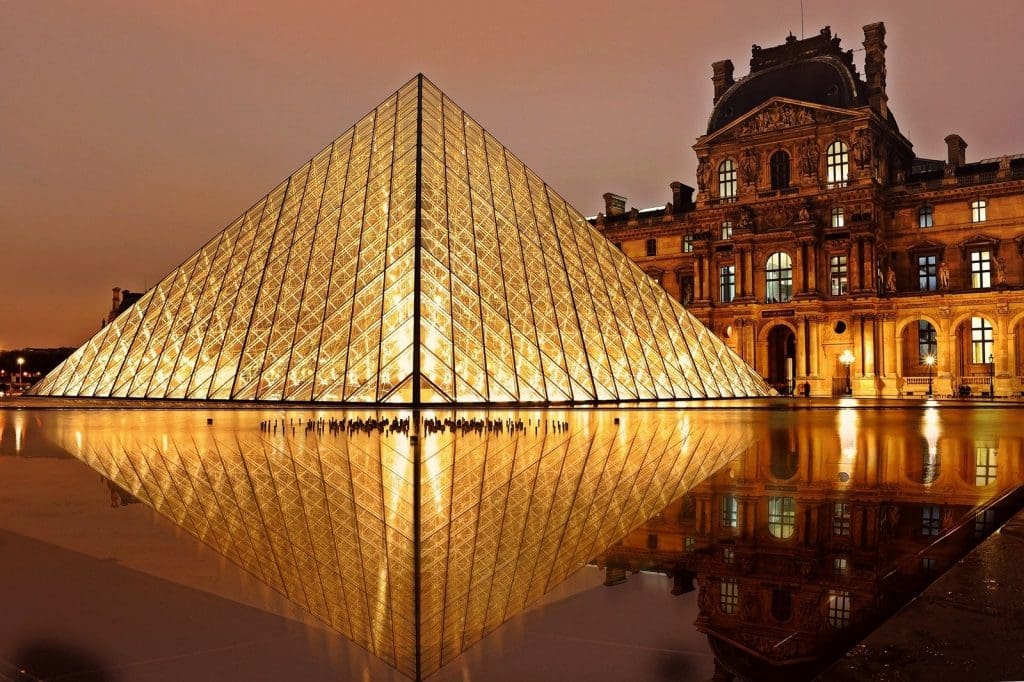Paris is a city bursting with spectacular architecture you wont want to miss.
Paris Architecture and French history are just two highlights after the main stream tourist spots like The Eiffel Tower.
Australian Ruby Boukabou lives between Paris and Sydney and she has written the ultimate guide to Paris architecture.
Here are some fantastic highlights from her book, The Architecture Lover’s Guide To Paris.
For architect lovers, a trip to the Eiffel Tower is, obviously, essential on a trip to Paris. But then what? With 2000 years of architecture in Paris to discover, it’s easy to be overwhelmed by the options.
Here are some highlights and must see locations to start with, from Ruby:
You’ll find hundreds more in my book The Architecture Lover’s Guide to Paris along with photos, walking tours, a 3 day itinerary, restaurant and hotel tips and much more.
Here is a link to a promo on the book:
1. The Louvre & The Louvre Pyramid
Rue de Rivoli, 75001
From fortress to palace to art gallery, Le Louvre is one of Paris’ most iconic buildings, constructed as a castle with a moat by Philippe II in the late twelfth century. Over the next centuries the castle transformed into a plush palace with various extensions by each king. French and Italian styles were fused through further extensions by architect Pierre Lescot, including an apartment wing in 1549 that was later replaced by a royal courtyard.
Claude Perrault added classical columns and a triangular pediment and Louis XIV’s quarters were constructed on the eastern side before Versailles became his residence of choice. After the revolution in 1789 and a bloody adieu to the royals, the Louvre transformed into an art gallery, gradually obtaining the world’s most impressive collection.
You can easily spend a day in and around the Louvre taking in the details of the various architects over the years. If the crowds get too much, take a stroll around the Tuileries, sit by the banks of the Seine or find respite at the palatial Le Meurice hotel bar/café (228 rue de Rivoli, 75001).
The Louvre Pyramid
Commissioned by President François Mitterrand in 1984, Chinese-American architect I.M. Pei designed the iconic glass and metal pyramid in the courtyard of the Louvre. Lit up after dark, the 21m-high pyramid proves a stunning ‘Paris by night’ shot. As with the Pompidou Centre and the Eiffel Tower, it was much criticised but is now embraced and understandably so – it’s magical.
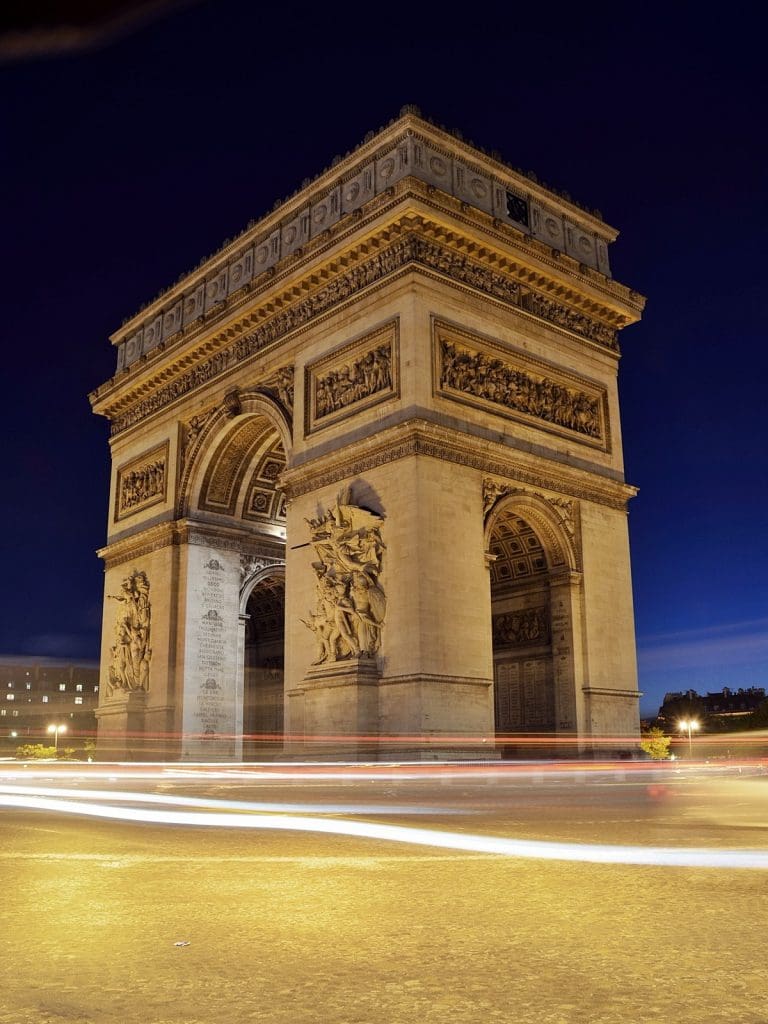
2. Arc de Triomphe de l’Étoile
Place Charles de Gaulle, 75008
www.paris-arc-de-triomphe.fr/en
Napoleon’s grand Arc de Triomphe de l’Étoile was commissioned to Jean-François Chalgrin in 1806 with an aim to glorify the emperor’s victories. The arch was in part inspired by the Arch of Titus in the Roman Forum, constructed in the first century, but while this was 50ft high (15.24m), Napoleon’s rises to 164ft (50m)! Situated at the top of the Champs- Elysées, on the highest point of western Paris, it is the centre of the historic axis. Twelve grand avenues shoot off around it like a star (étoile).
High-relief sculptures celebrating military victories feature on the four pedestals. La Marseillaise (officially called ‘The Departure of the Volunteers of 1792’) is the most famous and was designed by the sculptor François Rude, representing the original French citizen army of 1792. A female warrior with wings, dressed in classical armour, lunges dramatically as young and old men clamber forth with swords and shields. You may recognise the scene – it’s another take on ‘Liberty Leading the People’ by Romantic painter Eugène Delacroix that hangs in the Louvre.
Today the arch serves to represent all French victories while commemorating the sacrifices of French soldiers.
Climb up 284 steps (or take a lift part of the way) to reach the observation deck on the top. Tickets and access on website.
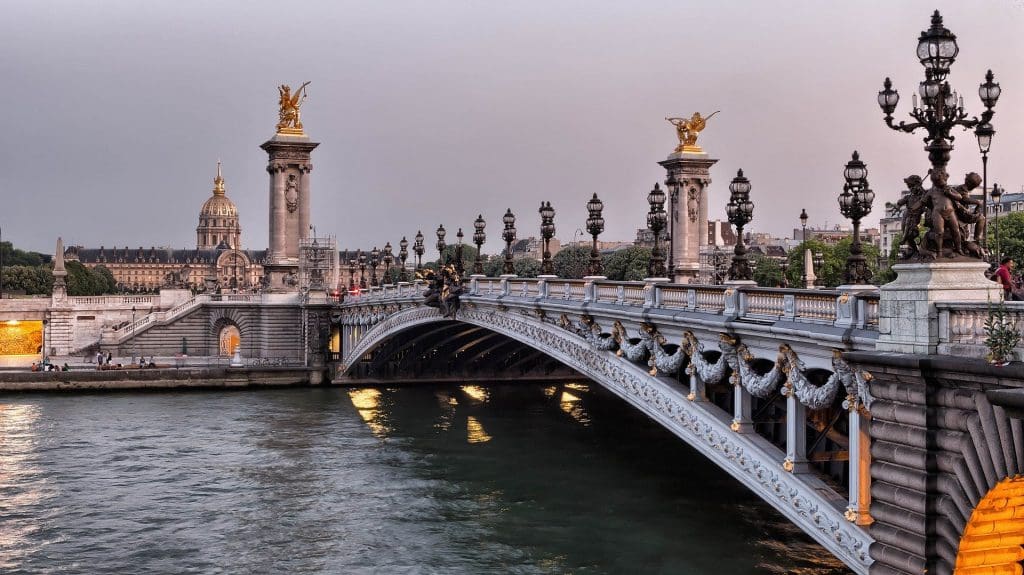
3. Pont Alexandre III, 75008
This is an exquisite example of Art Nouveau elegance, built in 1900. It was the first to install electric lighting, using beautifully ornate candelabras. It also includes gilded statues of winged horses symbolising Arts, Sciences, Commerce and Industry. It is a favourite location for wedding photos and Instagrammers, with the Eiffel Tower in the background. Adele crosses the deserted bridge in the music video for Someone Like You. Oh, and you can party underneath it at Showcase nightclub.
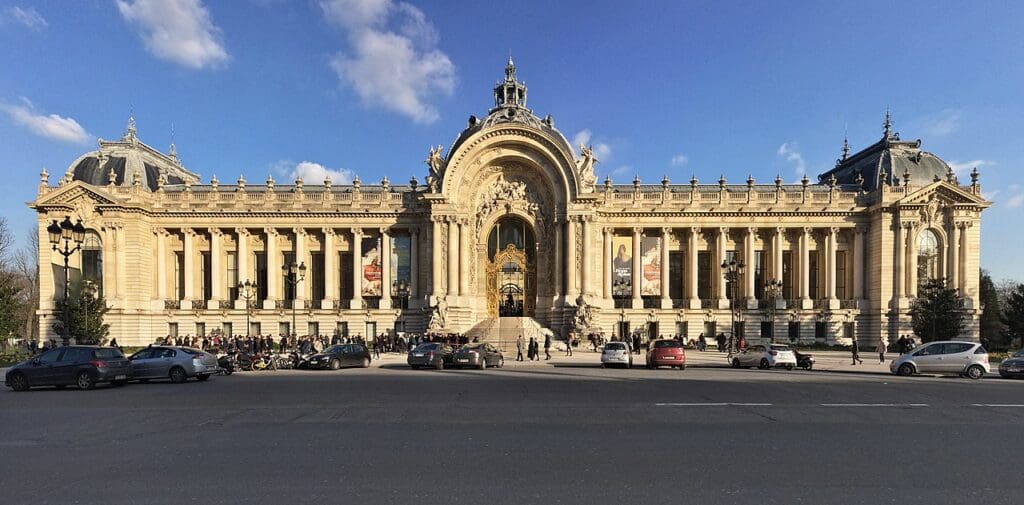
4. Petit Palais
Avenue Winston Churchill, 75008 +33 (0)1 53 43 40 00
Built for the 1900 World Fair, this refined Beaux-Arts building has beautiful interiors with dramatic, high ceilings decorated with allegorical paintings. The fine art museum inside includes a terrific free permanent collection and a pretty inner courtyard café.
5. Colonne de Juillet (1840)
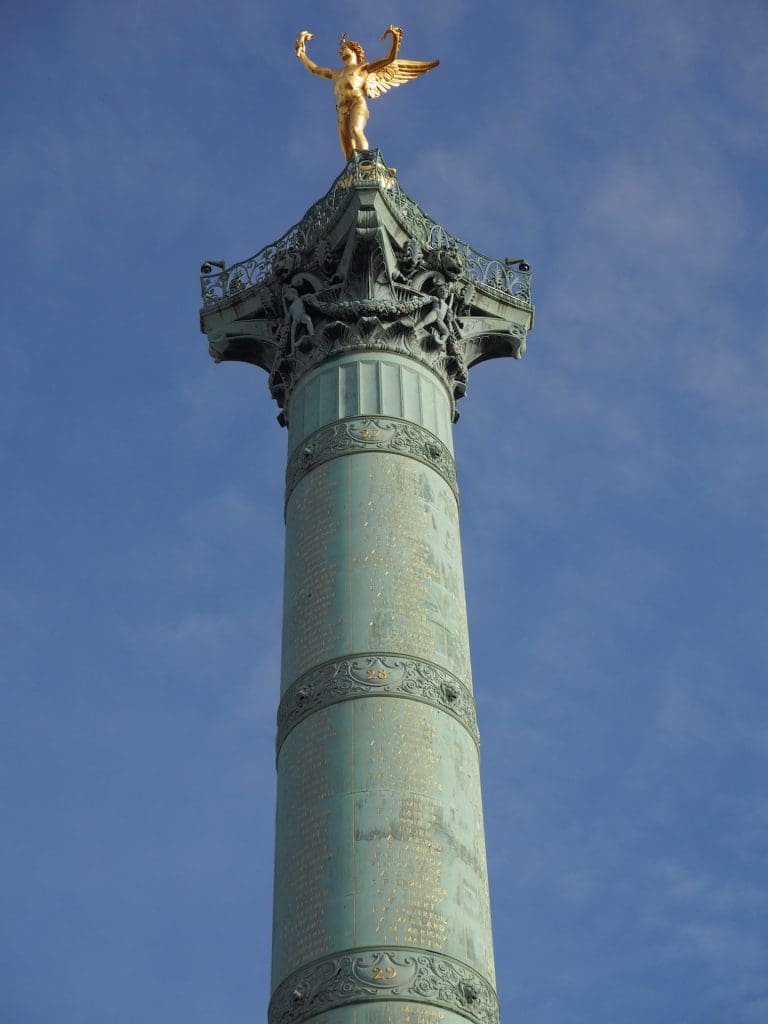
Place de la Bastille, 75011
This 47m-high and 4000kg Corinthian- style column, standing on the site of the former Bastille prison, commemorates the 1830 Revolution that saw the fall of King Charles X and the start of the July Monarchy of King Louis-Philippe. The monument was constructed by architect Joseph-Louis Duc in 1840 with a base of white marble and bronze bas-reliefs including a lion and some roosters. The names of the fallen of the 1830 Revolution are engraved in gold on the sides. On the top is a gilded globe and a bronze statue by Augustin Dumont: the Génie de la Liberté (Spirit of Freedom), poised on one leg and sporting wings and a star on his head. He is holding broken chains in one hand and the flame of humanity in the other. When the sun is out, it’s both a magical vision and a handy landmark.
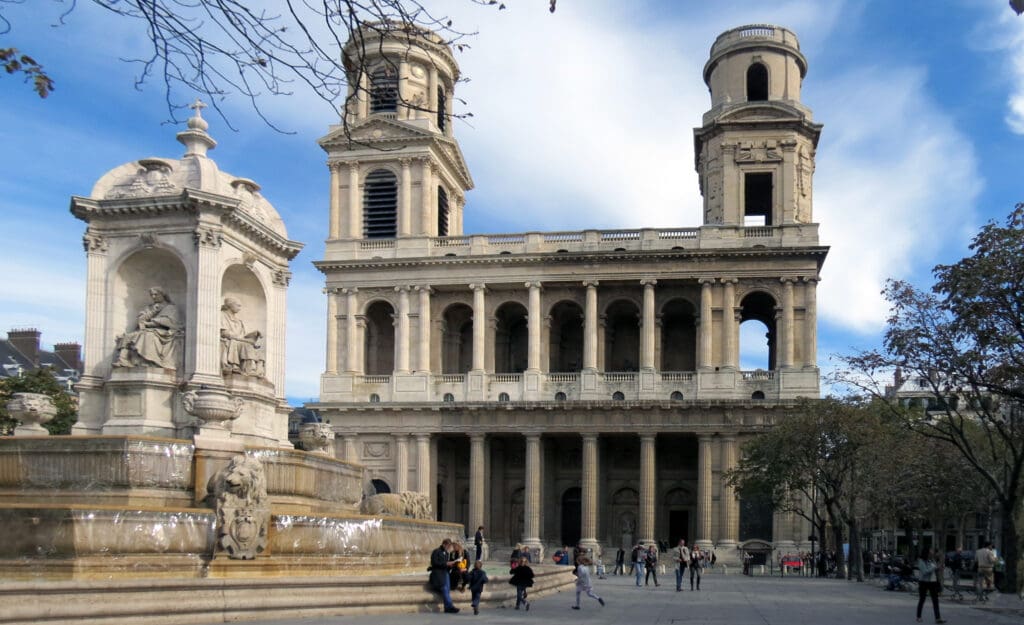
6. Saint-Sulpice
2 rue Palatine, 75006
In 1646, Anne of Austria laid the cornerstone of this beautiful parish church. It was built for the field workers to plans by Christophe Gamard, and later by Daniel Gittard. Saint-Sulpice was built on the site of a thirteenth-century Romanesque church and is the second largest church in Paris, located close to the Luxembourg Gardens on the Left Bank.
The floor plan resembled Notre-Dame and flying buttresses, (inspired by Syrian architecture), support the choir. Theatrical elegance is in the façade, with two towers, a double portico and monumental classical columns by Giovanni Niccolò Servandoni (aka Jean-Nicolas Sevran), a Florence-born architect, decorator and set designer whose father was French. His inspirations included St Paul’s Cathedral in London. Inside you’ll find original murals by Romantic master Eugène Delacroix, including ‘Jason Wrestling with the Angel’ and ‘Heliodorus Driven from the Temple’. The church featured in the 2003 film The Da Vinci Code.
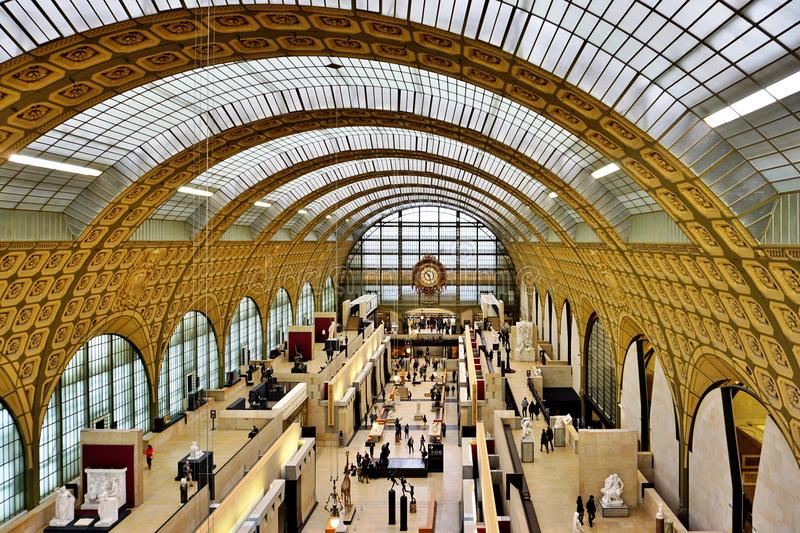
7. Gare d’Orsay (now Musée d’Orsay)
1 rue de la Légion d’Honneur, 75007
This neo-baroque masterpiece on the Left Bank of the Seine was built for the World Fair of 1900, to be close to the Grand Palais exhibition space. It also housed a hotel (practical for the days of suitcases without wheels!).
When Montparnasse train station was built and took over the railway traffic, President Giscard d’Estaing initiated a transformation of the station into a nineteenth-century art gallery. The Musée d’Orsay is one of the most popular Paris museums today, with hundreds of Impressionism and post-Impressionism works hung in the old railway halls. After a visit, sit and muse by the banks of the Seine.
8. Galeries Lafayette Paris Haussmann
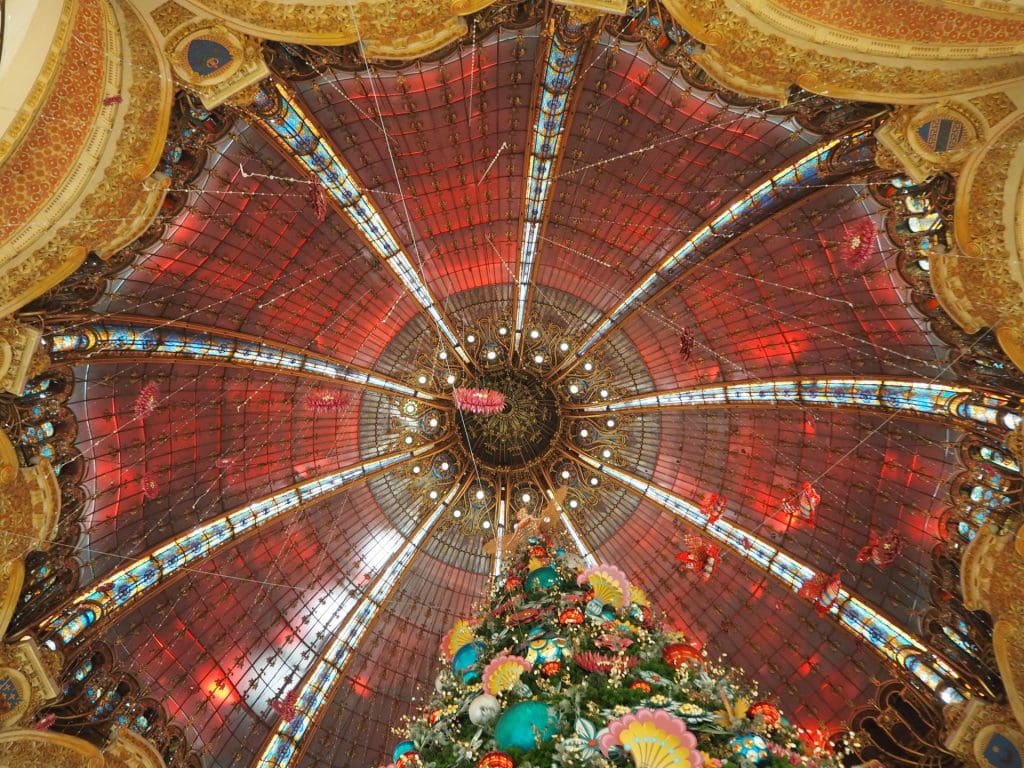
40 boulevard Haussmann, 75009
Galeries Lafayette Paris Haussmann was opened in 1895 by Alsatian cousins, Alphonse Khan and Théophile Bader. They became instantly successful when they made small adjustments to haute couture designs that they observed at prominent events and made their own more affordable ready-to-wear labels. The outside of the building is typically Haussmannian, although 1932 alterations by Pierre Patout on the rue de la Chausée-d’Antin entrance are Art Deco-styled with intricate terracotta cladding.
Its interior is breathtaking – five levels of stands looking across at each other over gilded wrought iron balconies with the pièce de résistance being a mesmerising 43m-high atrium roof with floral Art Nouveau/Baroque-styled designs, by Édouard Schneck. Chestnut leaf reliefs on the walls symbolise prosperity (which is what you need to shop here). In 1951, Galeries Lafayette built the highest escalator in Europe. Take it to the top floor for a view over the back of Opéra Garnier and Paris. During winter, there’s usually a mini ice-skating rink for the kids.
9. Louis Vuitton Foundation (2014)
8 avenue du Mahatma Gandhi, 75116
www.fondationlouisvuitton.fr/en
A total of 3,600 panels of curved glass create the twelve sails of this Frank Gehry-designed cultural centre. Inspired by late nineteenth-century glass and garden architecture and sitting in the Bois de Boulogne forest, the centre has been described as a giant iceberg, a cluster of clouds and a sailboat. ‘To reflect our constantly changing world, we wanted to create a building that would evolve according to the time and the light in order to give the impression of something ephemeral and continuously changing’ (Frank Gehry).
Much of the collection is site-specific and multi-media with international artists responding to the many interior and exterior spaces created by Gehry’s architecture.
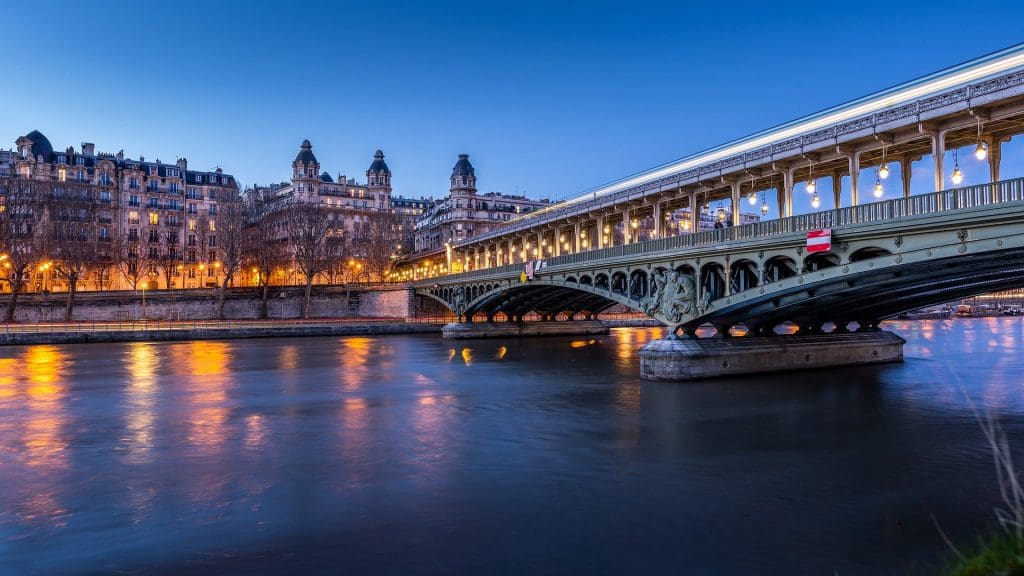
10. Pont de Bir-Hakeim, 75015
Cars, pedestrians and trains share this bridge, a favourite location for films and clips with the Eiffel Tower looming in the background. The thin metal colonnades, hanging tear-drop lamps and decorations are from the first decade of the twentieth century, a period when industrialisation was a positive, even romantic, notion compared to the heavy nature of masonry. If you happen to be there at sunset when the lights of the bridge, and the Eiffel Tower flash on, your heart will skip a beat.
I found this bridge so beautiful, I just had to tap dance on it with a couple of friends and become part of the Paris urban orchestra…
The Architecture Lover’s Guide to Paris is available around the world. Grab a copy from your favourite bookseller, or order online direct from the publisher/ organise a signed copy here: www.rubytv.net/books

